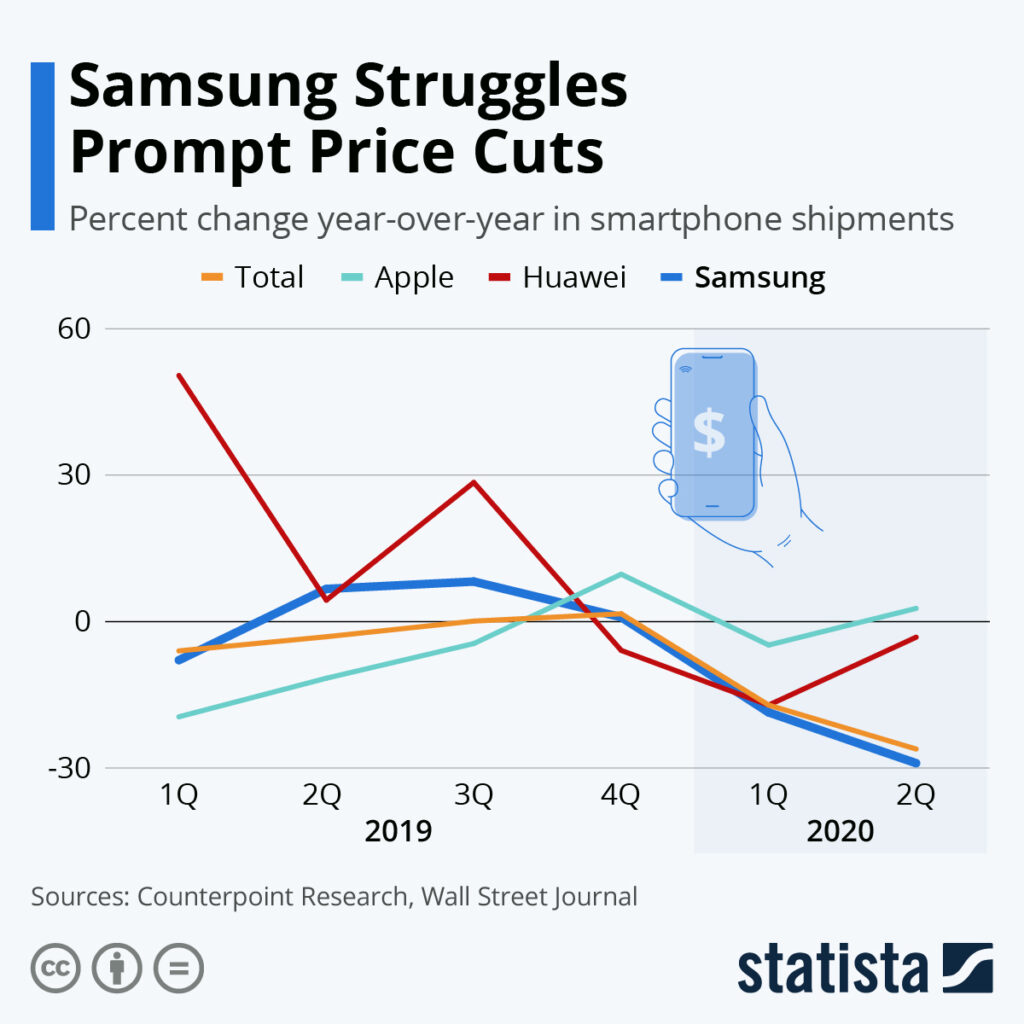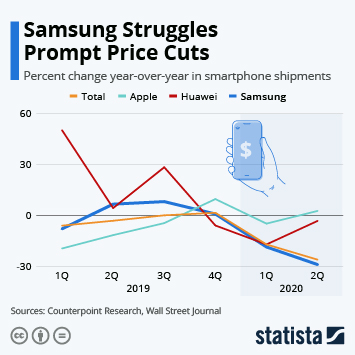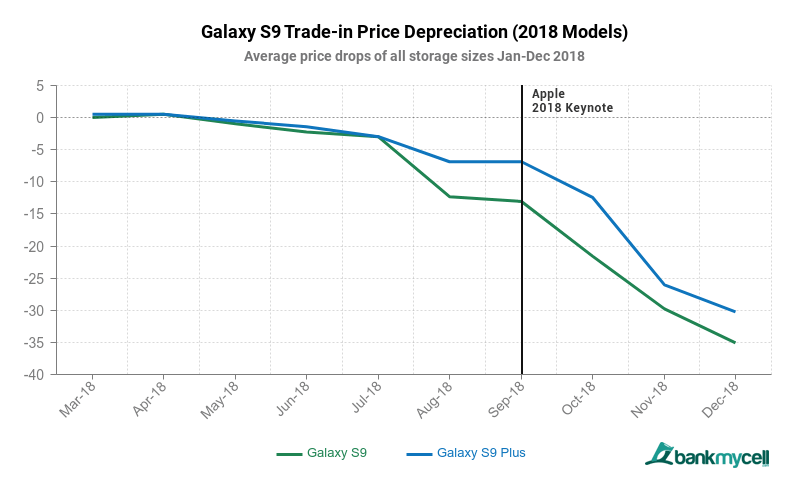Hey, have you ever wondered if the price of Samsung smartphones decreases over time? I mean, it’s no secret that technology becomes more affordable as time goes on, but what about these fancy smartphones? I’ve always been curious to know if waiting a few months or even a year could save me some serious cash. Well, I did a bit of research, and I’m here to spill the beans on whether the price of Samsung smartphones actually drops over time.
So, here’s the scoop. Samsung smartphones do tend to decrease in price over time, but it’s not as straightforward as you might think. See, when a new model is released, it usually comes with a hefty price tag. But as time goes on, Samsung tends to drop the prices to make way for newer models. This means that if you’re willing to be patient, you can save some money. However, it’s important to note that the price drops are not always significant, and there might be some factors that can influence the price decrease.
Now, let me break it down a bit more for you. Samsung follows a typical product lifecycle, where a new model is released, and the previous models gradually decrease in price. The price drop is usually more significant when a new flagship model is released, but if you’re eyeing a mid-range or budget Samsung smartphone, the price might not decrease as much. This is because these phones are already positioned as more affordable options, so the price drop might not be as noticeable.
So, to sum it up, the price of Samsung smartphones does decrease over time, but the extent of the decrease depends on various factors, such as the model, demand, and competition. If you’re after the latest flagship model, you might have to wait a bit longer for a substantial price drop. However, if you’re open to slightly older models or mid-range options, you can definitely find some great deals by waiting a few months. In any case, be sure to do your research and compare prices before making a purchase to ensure you’re getting the best possible price. I have always been fascinated by the dynamic nature of the smartphone market. As a technology enthusiast, I constantly find myself pondering over the factors that influence the pricing of these devices. Samsung, one of the leading smartphone manufacturers, offers a wide range of devices with varying price points. In this article, I will explore the various factors that influence the price of Samsung smartphones and analyze whether the price of these devices decreases over time.

This image is property of cdn.statcdn.com.
Technological Advancements
Technological advancements play a significant role in determining the price of Samsung smartphones. Each new generation of smartphones brings with it innovative features and improved performance. As Samsung introduces new technologies, such as enhanced camera capabilities or faster processors, the cost of production increases. Consequently, this often leads to higher launch prices of new models.
Competition in the Market
The smartphone market is highly competitive, with numerous brands vying for consumer attention. Samsung faces fierce competition from other manufacturers, such as Apple, Huawei, and Xiaomi. In order to stay competitive, Samsung must consider not only the cost of production but also the pricing strategies of its rivals. To attract consumers, Samsung may adjust the prices of its smartphones accordingly, either by introducing promotional discounts or by offering bundled packages.
Supply and Demand
The law of supply and demand also plays a crucial role in determining the price of Samsung smartphones. When a new Samsung smartphone is released, there is often a high demand for it, especially among loyal Samsung users and early adopters. As a result, Samsung can initially set a higher price for the new model. However, as the initial demand is met and newer models are introduced, the price of the older models tends to decrease to stimulate sales.
Cost of Production
The cost of production is a fundamental factor that contributes to the pricing of Samsung smartphones. The components, labor, and research and development expenses involved in manufacturing a smartphone all influence its price. As Samsung invests in research and development to deliver cutting-edge technology, the cost of production increases. This, in turn, impacts the final price at which the smartphones are sold to consumers.
Introduction of New Models
Samsung is known for its frequent release of new models, each accompanied by innovative features and designs. This constant introduction of new models can have a significant impact on the pricing of Samsung smartphones.
Innovations in Design and Features
When Samsung unveils a new model, it often comes with the latest design trends and technological advancements. These innovations in design and features add value to the smartphone and justify a higher price tag. However, as time passes and newer models are introduced, the novelty of these features diminishes, leading to a decrease in price.
Impact on Pricing
The introduction of new models can have both positive and negative effects on pricing. Initially, the launch price of a new Samsung smartphone is often set at a premium to cater to early adopters and enthusiasts who are willing to pay a higher price for the latest technology. As demand for the new model stabilizes and newer models are released, the price of the older model gradually decreases to appeal to a broader range of consumers.
Effect on Older Models
The introduction of new models can also have an impact on the pricing of older Samsung smartphones. As newer models are released, older models tend to become less desirable in the eyes of consumers. To maintain sales and clear existing stock, Samsung often reduces the prices of older models. This creates an opportunity for budget-conscious consumers to purchase a Samsung smartphone at a lower price point.
Price Depreciation Over Time
One of the most prominent factors that contribute to the decreasing price of Samsung smartphones over time is price depreciation.
Initial Release Pricing
When a new Samsung smartphone is released, it generally comes with a higher price tag. This is due to the initial hype and the added value of being the latest and most advanced model available. However, as time goes by, this initial release price tends to decrease.
Price Trends for Flagship Models
Flagship models are typically Samsung’s most advanced and premium smartphones. These devices often have a higher initial release price compared to other models in Samsung’s lineup. However, as newer flagship models are introduced, the prices of the older flagship models tend to decrease. This price reduction is often influenced by factors such as market demand, competition, and the introduction of newer technologies.
Price Reductions with Newer Models
As Samsung releases newer models, the prices of older models undergo a gradual reduction. This price reduction is driven by various factors, including increased competition, the need to clear existing stock, and the introduction of newer technologies. Samsung aims to make its smartphones more accessible to a wider range of consumers by offering them at lower price points.
Competitive Pricing Strategies
In a competitive market, pricing strategies play a significant role in determining the success of a product. Samsung employs various pricing strategies to remain competitive in the smartphone market.
Price Adjustments to Compete with Rivals
In order to compete with rival brands and attract consumers, Samsung may adjust the prices of its smartphones accordingly. By analyzing the pricing strategies of its competitors, Samsung can strategically position its devices in terms of pricing. This can involve offering devices at a lower price point or providing additional features and value for a similar price.
Promotional Discounts
Promotional discounts are a common strategy used by smartphone manufacturers to boost sales and attract consumers. Samsung periodically offers promotional discounts on its smartphones, either through direct price reductions or through bundle deals that include additional accessories or services. These promotions can significantly reduce the price of Samsung smartphones, making them more affordable for potential buyers.
Bundling Offers
Bundling offers involve combining multiple products or services together at a discounted price. Samsung often bundles its smartphones with other products or services, such as smartwatches or wireless earbuds. These bundles not only add value for the consumer but also allow Samsung to maintain a competitive edge by offering a more attractive pricing proposition.

This image is property of cdn.statcdn.com.
Market Performance
The market performance of Samsung smartphones is influenced by various factors, including market share, brand reputation, and sales volume. These factors, in turn, impact the pricing strategies adopted by Samsung.
Implications of Market Share
Samsung’s market share directly affects its ability to dictate pricing. A higher market share allows Samsung to have more control over its pricing strategies, as consumers perceive Samsung smartphones to be more desirable and are willing to pay a higher price. Conversely, a lower market share may require Samsung to adopt more competitive pricing strategies to attract consumers.
Brand Reputation and Pricing
Samsung’s reputation as a smartphone manufacturer influences its pricing. The brand has established itself as a provider of high-quality products, and consumers are often willing to pay a premium for a Samsung smartphone based on this reputation. However, the brand reputation can also backfire if consumers perceive that the price does not align with the value offered by the device.
Sales Volume and Price Stability
The sales volume of Samsung smartphones also impacts pricing stability. Higher sales volume allows Samsung to set a more stable pricing strategy as the demand for its products remains consistent. On the other hand, if sales volume decreases, Samsung may need to adjust its pricing to encourage sales and maintain its market position.
Consumer Preferences and Perception
Consumer preferences and perception play a crucial role in determining the price of Samsung smartphones.
Brand Loyalty and Price Sensitivity
Brand loyalty can influence the pricing of Samsung smartphones. Consumers who are loyal to the Samsung brand may be willing to pay a higher price for the perceived quality and reputation associated with Samsung devices. However, price sensitivity is also a factor that impacts consumer purchasing decisions. If consumers believe that a Samsung smartphone is overpriced compared to its competitors, they may choose a different brand or wait for price reductions.
Perceived Value for Money
Consumers assess the value for money offered by Samsung smartphones before making a purchase. They analyze the features, performance, and quality of the device in relation to its price. If consumers perceive that a Samsung smartphone offers a high value for money proposition compared to its competitors, they may be more willing to pay a higher price.
Influence of Consumer Reviews
Consumer reviews and feedback can significantly impact the perceived value and pricing of Samsung smartphones. Positive reviews highlight the strengths of a device, making consumers more willing to pay a higher price. Conversely, negative reviews can create doubts in the minds of consumers, leading to a decrease in price perception and demand for the device.

This image is property of cdn.wccftech.com.
Impact of Economic Conditions
Economic conditions, such as inflation and currency exchange rates, can influence the pricing of Samsung smartphones.
Inflation and Currency Exchange Rates
Inflation and currency exchange rates can impact the cost of production of Samsung smartphones. If there is a rise in inflation or a decrease in the value of the currency, the cost of sourcing components and raw materials may increase. This, in turn, can affect the final price of Samsung smartphones.
Global Economic Downturns
During global economic downturns, consumer purchasing power may decrease, leading to a decrease in demand for smartphones. To stimulate sales during such periods, Samsung may implement price reduction strategies, promotions, or bundle offers to attract consumers and maintain market share.
Consumer Purchasing Power
Consumer purchasing power is a key consideration for Samsung when determining the pricing of its smartphones. Pricing strategies must align with the purchasing power of consumers in order to maintain sales and profitability. Samsung monitors economic conditions and adjusts pricing accordingly to cater to different market segments.
Second-Hand Market
The second-hand market for Samsung smartphones also affects the pricing of these devices.
Resale Value and Price Depreciation
Samsung smartphones, like any other smartphone, experience price depreciation in the second-hand market. As newer models are released, the value of older models decreases, leading to a lower resale price. This depreciation can also influence the pricing of new Samsung smartphones, as consumers may hesitate to purchase a new device if they anticipate a significant decrease in value in the future.
Demand for Used Samsung Smartphones
The demand for used Samsung smartphones can impact pricing. If there is a high demand for used Samsung smartphones in the market, the prices of these devices may remain relatively stable. However, if the demand is low, sellers may need to offer their devices at a lower price to attract buyers.
Factors Affecting Second-Hand Prices
Several factors influence the pricing of used Samsung smartphones. The condition of the device, the age of the model, the availability of accessories, and the presence of any warranty or certification can all impact the price. Buyers are often willing to pay a higher price for a used Samsung smartphone that is in good condition and comes with the necessary accessories and documentation.

This image is property of cdn.statcdn.com.
Sustainability and Environmental Factors
Sustainability and environmental factors are increasingly influencing consumer purchasing decisions. These factors can also impact the pricing of Samsung smartphones.
Recycling Programs and Trade-In Offers
Samsung has implemented recycling programs and trade-in offers to encourage consumers to recycle their old devices and purchase new ones. By offering incentives, such as trade-in value or discounts on new devices, Samsung aims to reduce electronic waste and promote sustainable consumption. These programs can impact the pricing of Samsung smartphones by providing consumers with cost savings or additional value for their old devices.
Impact on Price and Demand
As consumers become more environmentally conscious, the demand for sustainable products, including smartphones, is increasing. Samsung’s commitment to sustainability and environmental responsibility can influence consumer perception and purchasing decisions. If consumers perceive that the price of a Samsung smartphone is justified by its sustainable practices, they may be more willing to pay a higher price.
Conclusion
In conclusion, the price of Samsung smartphones is influenced by a multitude of factors. Technological advancements, competition, supply and demand, cost of production, the introduction of new models, price depreciation over time, competitive pricing strategies, market performance, consumer preferences and perception, economic conditions, the second-hand market, and sustainability and environmental factors all play a role in determining the price of Samsung smartphones.
Samsung adopts various pricing strategies to cater to different market segments and maintain its competitiveness. While the initial price of a Samsung smartphone may be higher, it often decreases over time due to factors such as the introduction of newer models, market demand, and price depreciation.
As a consumer, it is important to consider these factors and assess the value offered by a Samsung smartphone before making a purchase. By understanding the dynamics of pricing in the smartphone market, consumers can make informed decisions and choose a Samsung smartphone that meets their needs and budget.

This image is property of www.counterpointresearch.com.









